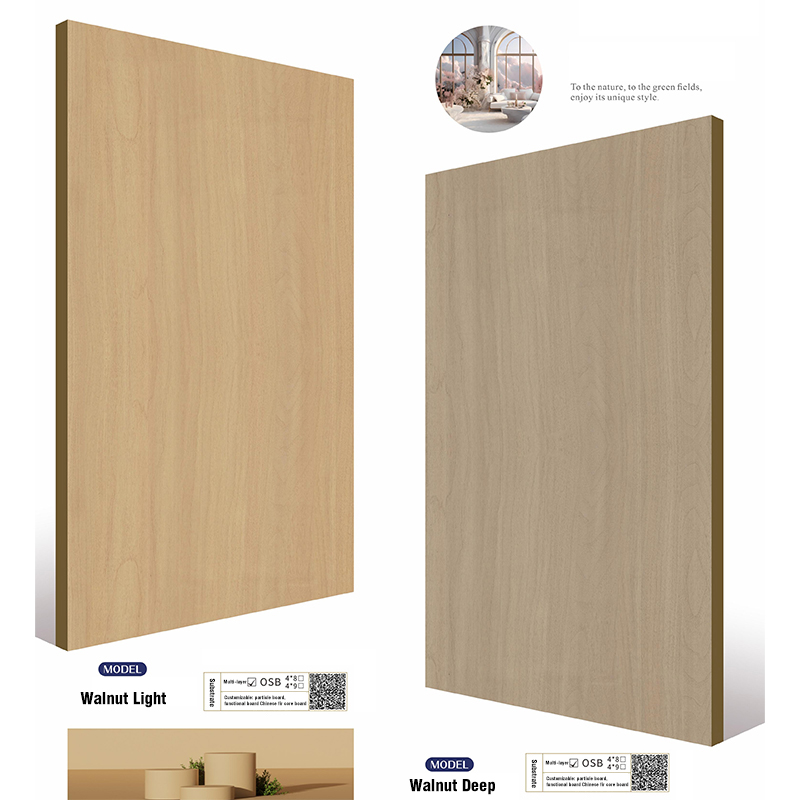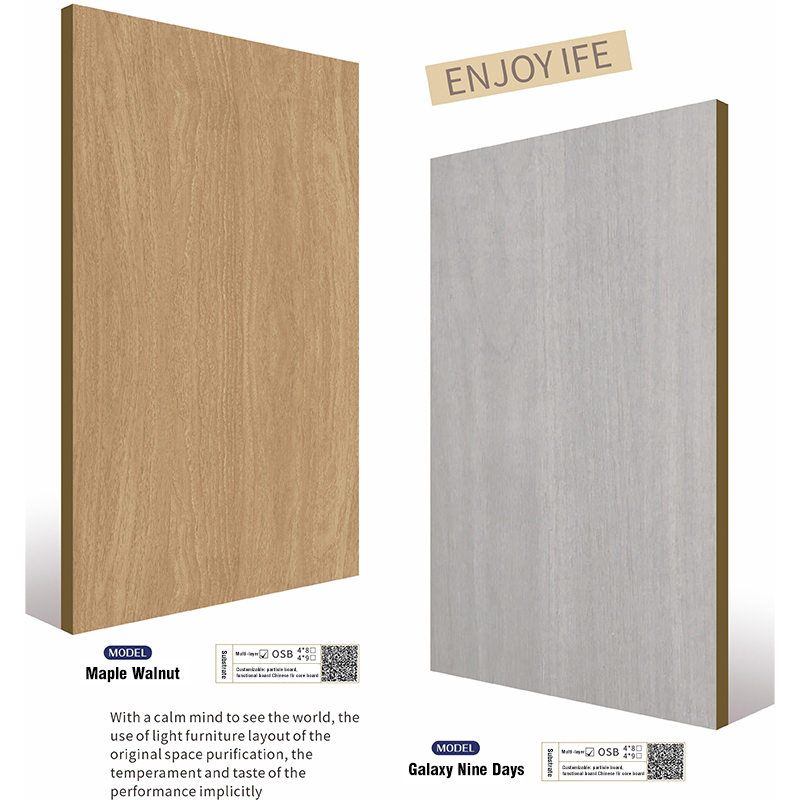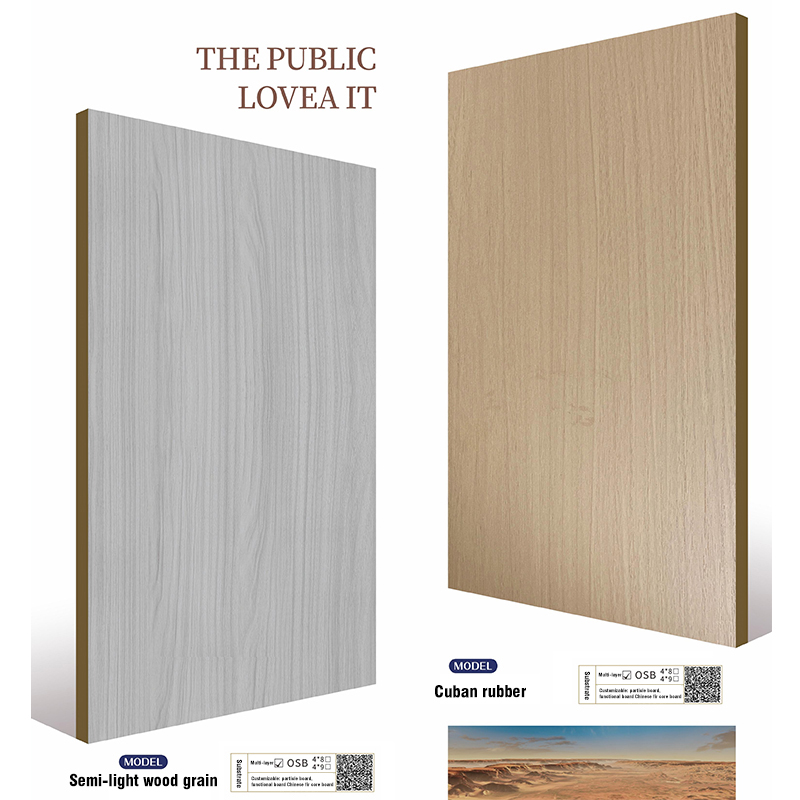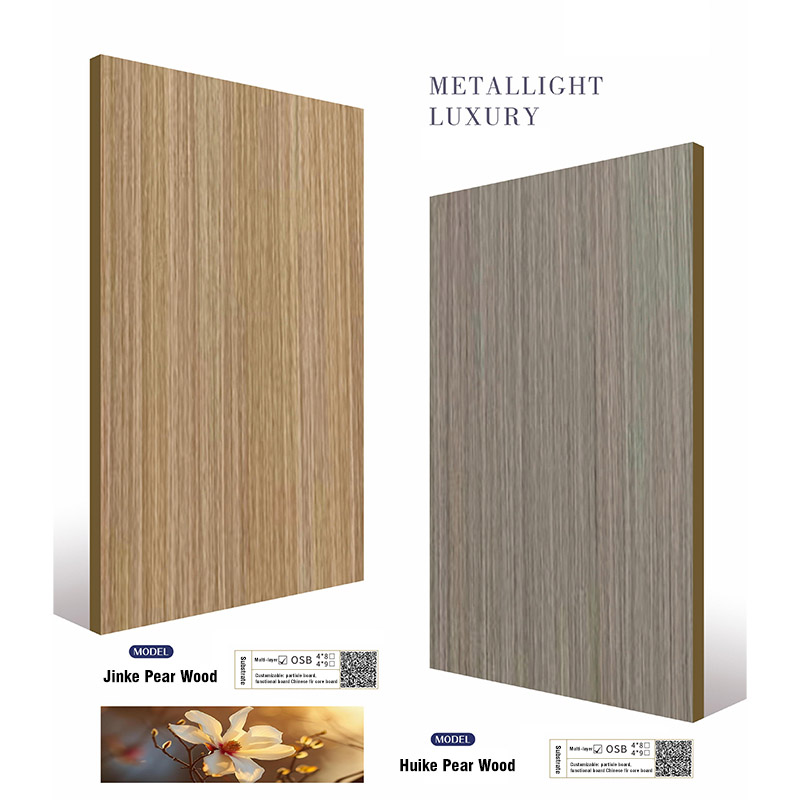How to present the natural wood grain texture while avoiding the glare of high gloss with the special finishing process of semi-light wood grain board substrate?
Release Time : 2025-07-16
The special finishing process of semi-light wood grain board substrate is to present the natural wood grain texture and avoid the glare of highlights by optimizing the restoration of wood grain and the control of glossiness. This process is not a simple surface coating, but a systematic processing process from texture reproduction to gloss adjustment, so that the board can retain the natural charm of wood and have a comfortable visual experience.
In the presentation of wood grain texture, the process first focuses on the accurate reproduction of natural wood texture. Through high-definition scanning technology, the texture, knots, pores and other details of real wood are fully recorded, and then these details are restored on the surface of the board through a special printing process. Unlike the fuzzy reproduction of ordinary finishes, this process can capture the subtle changes in depth and texture of wood grain, making the texture of the board surface as three-dimensional as natural wood. When you touch it with your hand, you can feel the subtle bumps and undulations, which convey the texture of natural wood both visually and tactilely.
The ink and color paste used in the finishing process are specially formulated to match the color tone of natural wood. The color of natural wood is not uniform, but has natural color difference and gradient. The process restores this natural color change on the surface of the board by controlling the concentration of ink and the number of printings, avoiding the dull feeling of industrial production. At the same time, the special ingredients added to the color paste can make the color present the unique warm luster of wood, rather than the harsh reflection of chemical pigments, further enhancing the natural texture of the wood grain.
In order to avoid the glare of highlights, the process has taken multiple measures to control the gloss. The first is the choice of coating materials. Matt or semi-matt resin coatings are used. Such coatings can absorb part of the light, reduce specular reflection, and keep the gloss of the board surface within a soft range. Unlike the strong reflection of the high-gloss coating, this semi-gloss coating allows light to form diffuse reflection on the surface. Even under strong light, it will not produce dazzling light spots, which is more visually comfortable.
The surface treatment of the coating also plays a key role. During the curing process of the coating, a special process is used to form a subtle concave and convex structure on the surface of the coating. These structures are difficult to detect with the naked eye, but they can change the reflection direction of the light, making the reflected light more dispersed, thereby reducing the intensity of the gloss. At the same time, this fine structure can also reduce the adhesion of fingerprints and water stains, so that the surface of the board always maintains a neat appearance and avoids visual discomfort caused by stains reflecting light.
The process also balances texture and gloss by superimposing multiple layers of coating. The bottom layer is responsible for fixing the wood grain pattern and enhancing adhesion, the middle layer adjusts the three-dimensional sense of the texture, and the top layer controls the gloss and provides protection. The thickness and composition of each layer of coating are precisely formulated so that the semi-gloss coating on the surface can cover the texture of the bottom layer without completely covering up the bumps of the wood grain. While maintaining the natural texture, the overall gloss is controlled within the ideal range, achieving a harmonious unity of texture and gloss.
In addition, the pre-treatment of the semi-light wood grain board substrate by the process also affects the final effect. Before the finishing treatment, the surface of the semi-light wood grain board substrate will be finely sanded to ensure that the surface is flat and smooth without burrs and defects. This smooth surface of the semi-light wood grain board substrate allows the subsequent coating to be evenly distributed, avoiding local gloss differences caused by the unevenness of the semi-light wood grain board substrate, keeping the gloss of the board surface consistent, further enhancing the visual comfort, and preventing the abruptness of local highlights or dark lights.
Finally, the process will also fine-tune the gloss according to different usage scenarios. For example, the gloss of boards used for indoor furniture will be controlled lower to adapt to the indoor lighting environment; while the gloss of boards used in commercial spaces will be slightly higher to enhance the brightness of the space, but no matter how it is adjusted, it will be kept within the range of semi-light, ensuring that it will not appear dull due to insufficient gloss, nor will it be dazzling due to excessive gloss, always making the natural wood grain texture the visual focus, while providing a comfortable visual experience.
Through the precise restoration of wood grain details, natural color matching, fine control of glossiness, and coordinated processing of coating and semi-light wood grain board substrate, the special finishing process of semi-light wood grain board substrate successfully achieves the presentation of natural wood grain texture and avoids the glare of highlights, making the board achieve ideal effects both visually and tactilely.







